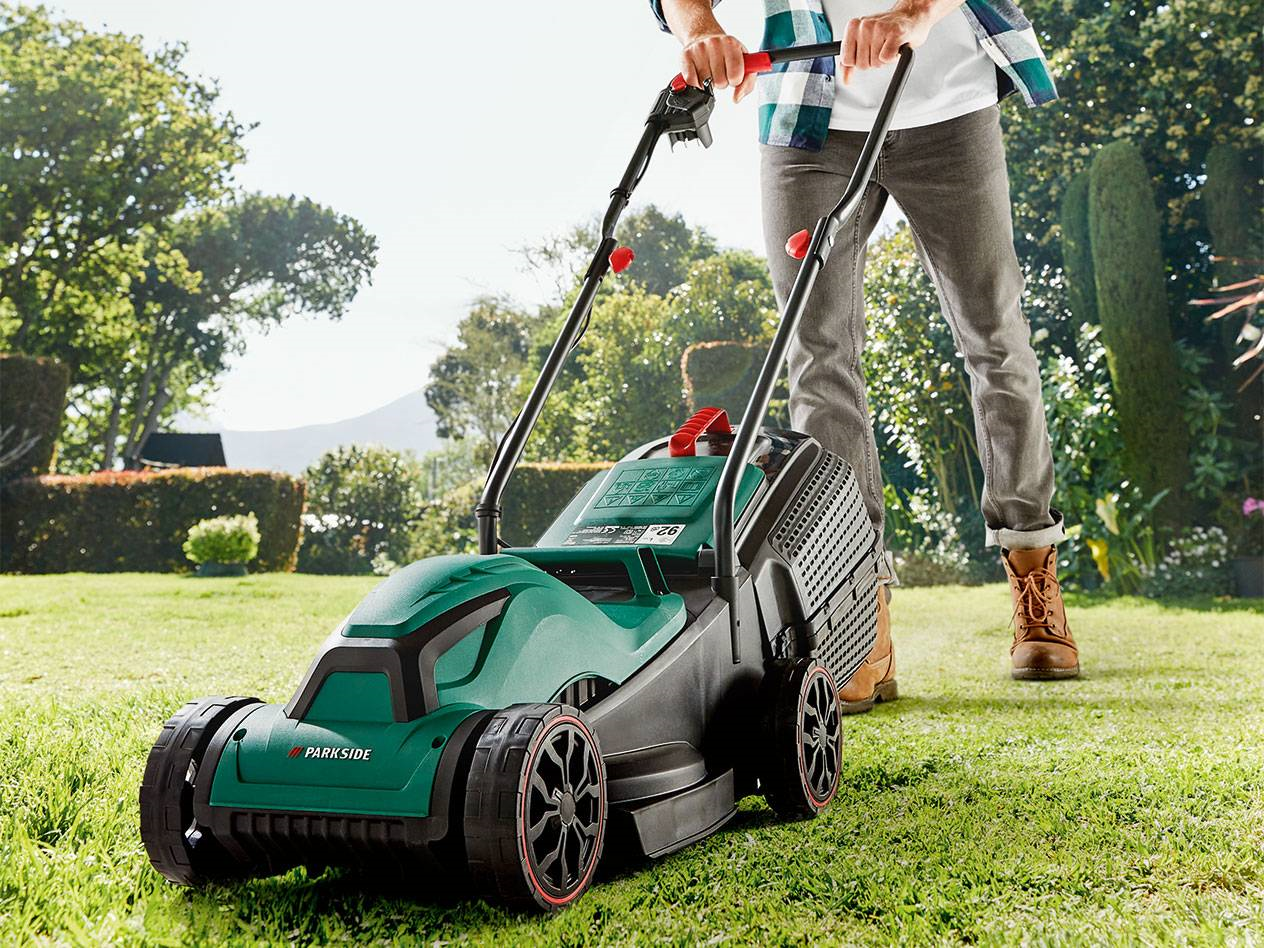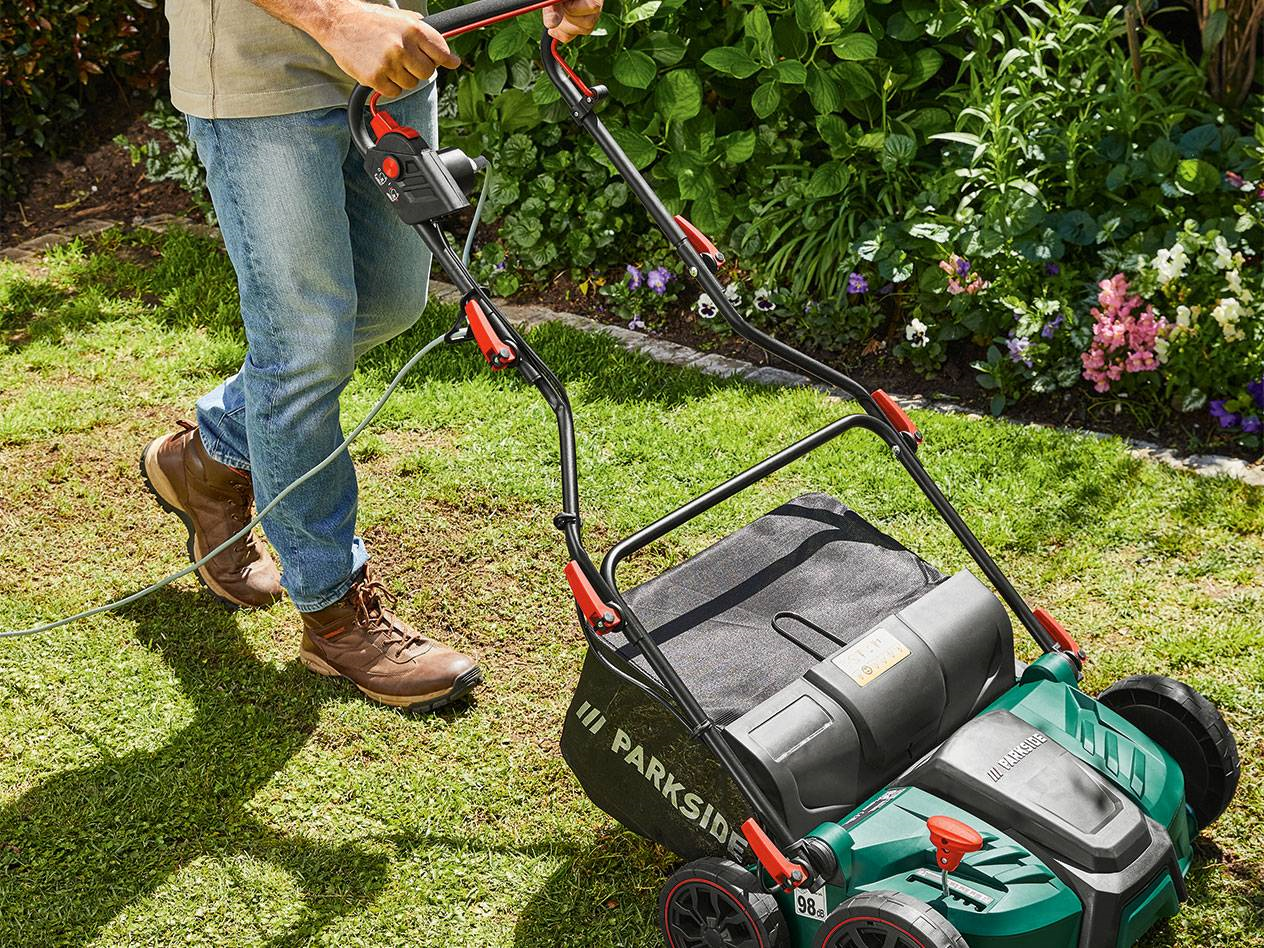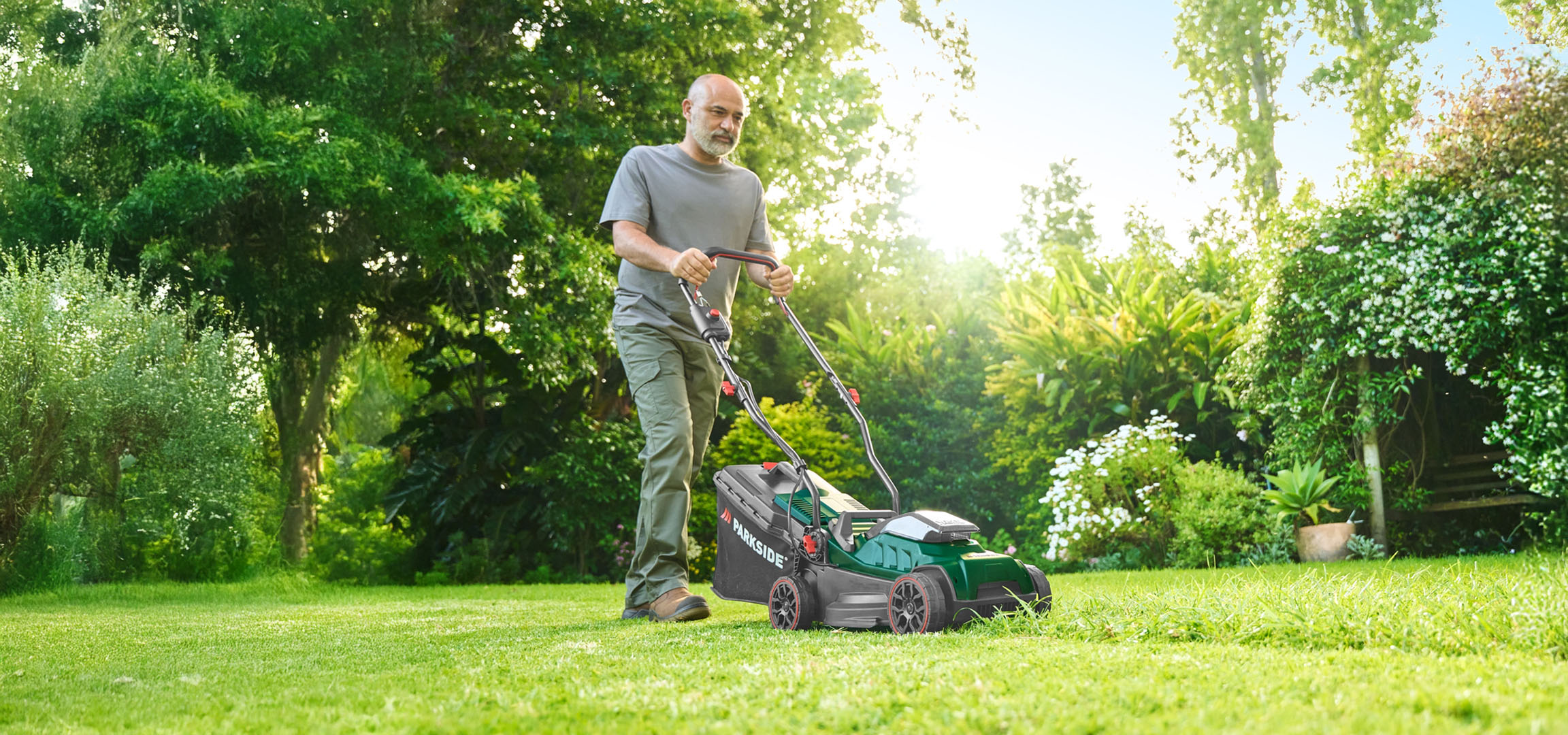Lawn care: how to keep your lawn beautiful for a long time
Why is looking after your lawn so important?
The right care is crucial for a healthy, beautiful lawn without weeds. Mowing, watering, scarifying, aerating, liming, fertilizing and reseeding: This guide shows you when to take the right action and which lawn care tips will help.
Contents
- Why is lawn care so important?
- What tasks are involved in lawn care?
- Lawn care calendar: What do I do when?
- Questions and answers
Why should i look after my lawn?
Even though lawns have relatively few requirements: It still needs a little care to keep it green and healthy. Too much moisture is just as damaging as too little water, traces of beneficial insects such as moles or voles destroy the overall appearance and matted lawns prevent sufficient light and air from reaching the greenery. In addition, weeds and diseases spread much faster on unkempt lawns. If you want to enjoy your lawn for a long time, you should do a minimum of maintenance.
What tasks are involved in lawn care?
There are generally six main tasks involved in lawn care. Once you've internalized the care routine, it quickly becomes second nature. Even a large lawn can be easily maintained with the right equipment without the professional help of a gardener.
Mowing the lawn

When you think of lawns, the first thing that comes to mind is mowing them. Regular mowing has several advantages:
A mowed lawn always looks tidy - an important point for all garden owners who don't want a wild garden.
In addition, a mowed lawn is denser and more hard-wearing and therefore less susceptible to weeds and diseases. However, a radical short cut every few weeks is not recommended; instead, the lawn should be cut once or twice a week to a height of around 3 centimetres (ornamental lawn) or a maximum of 5 centimetres (utility lawn).
Large selection of lawn mowers
A lawn mower is the ideal tool for mowing flat areas. The selection ranges from simple hand lawn mowers to petrol and electric lawn mowers and lawn tractors for large areas. Robotic mowers are also increasingly available on the market. Narrow edges and corners, on the other hand, can be shaped with a lawn trimmer. With the right tool and the right lawn mowing tips, your lawn will look beautiful again in no time at all.
Watering the lawn
Like any other plant, lawns need a certain amount of water to survive. It is therefore necessary to water the lawn regularly, especially in summer. The right amount is crucial. A freshly laid lawn needs a lot of water, especially at the beginning, so that the roots can grow well. It can be watered throughout the day without any problems.
Lawns that have been growing in the garden for some time should be watered once a week. The roots of the lawn reach up to ten centimeters below the soil. Enough water must be given so that the moisture can penetrate to this depth. On average, 20 to 30 minutes of watering is sufficient - preferably after sunset so that the water does not evaporate directly but can seep into the soil.
For smaller areas, a garden hose with a spray head can be used for watering. If you don't want to water with a hose or have a larger lawn area to maintain, you can also use mobile or permanently installed lawn sprinklers. Some models can be controlled with a watering computer so that watering is fully automatic.
Scarifying and aerating the lawn

During the cold seasons, it is unavoidable that blades of grass become matted or die off. Moss also tends to form when it is particularly damp and uncomfortable outside. Leaf debris and other organic residues also prevent the lawn from breathing. Mold also has an easy time in these places. It is therefore important to clear the lawn of dead winter debris in spring.
Scarifying involves combing the lawn: Felt, weeds and plant residues are removed. Every lawn should be scarified both crosswise and lengthwise every year at the start of the gardening season. If necessary, scarifying can be repeated in the fall to remove plant and mowing residues from the summer. Later in the year, it is advisable to aerate the lawn. Unlike scarifying, where the blade penetrates a few millimetres into the soil, aeration or aerification involves drilling holes in the soil. This procedure ensures that the soil is supplied with oxygen. Aerating is also best carried out once a year. After this step, the lawn is ready for fertilizing.
Liming the lawn
Sometimes a lawn has a particular need for lime. A pH test for the soil provides information about the exact composition of the soil. But a look at the lawn itself can also reveal a lot: If a lot of moss is growing on the lawn, this is a sign that the soil contains too little lime. A spreader is used to distribute the lime evenly over the lawn. Once lime has been applied, it only needs to be repeated after two to three years. After liming, you should wait three to four weeks before fertilizing the lawn.
Re-seeding the lawn
Bare patches in the lawn are not particularly attractive. The best time to reseed is in spring after scarifying. This prevents weeds from establishing themselves in the bare patches. If necessary, reseeding can be repeated in the fall. Small areas can be planted by hand; for larger holes, it is advisable to use a spreader wagon so that the seed is evenly distributed. When sowing, make sure that the seed is spread both lengthwise and crosswise. The seeds are worked into the soil using a rake or by watering with a lawn sprinkler. The areas must be kept moist for the next four weeks so that the seed can germinate. The new lawn can be mowed when it has reached a length of 10 centimeters..
Lawn care calendar: What do I do when?
Not every lawn care task is necessary or useful at every time of year. This table provides an overview.
Spring | Summer | Autumn | Winter |
|
|---|---|---|---|---|
Mowing | Yes | Yes | No | No |
Watering | No | Yes | No | No |
Scarifying | Yes | No | Yes | No |
Ventilating | Yes | No | No | No |
Liming | Yes | No | Yes | No |
Fertilizing | Yes | Yes | No | No |
Reseeding | Yes | No | Yes | No |
Questions and answers
Moles are a protected species. They may not be caught, injured or killed. There are numerous methods to drive them away. Methods that attack the mole's sense of smell or hearing are particularly promising. For example, spreading buttermilk, garlic water or mothballs on the ground can help. The sound of a wind chime can also often help.
The same care rules apply to rolled lawns as for seeded lawns. Here too, regular mowing, scarifying, watering and fertilizing help to keep the lawn looking good for a long time. Bare patches in the turf can be repaired either by reseeding or by laying special small turf panels.
Depending on how badly the lawn has been damaged by the drought, various measures need to be taken. If there are only brown patches, it is sufficient to water the lawn sufficiently for it to recover. Larger areas need to be reseeded. If the entire lawn and the roots have dried out or even burnt, the only solution is to completely renew the lawn.

